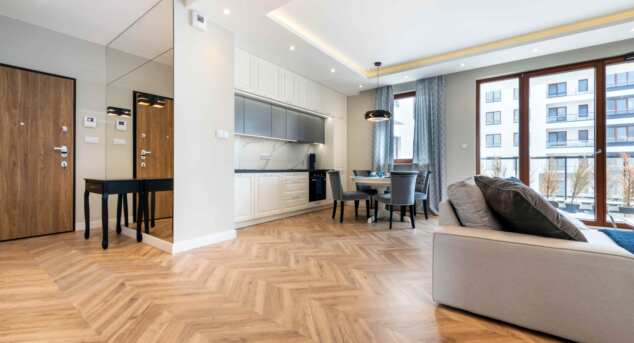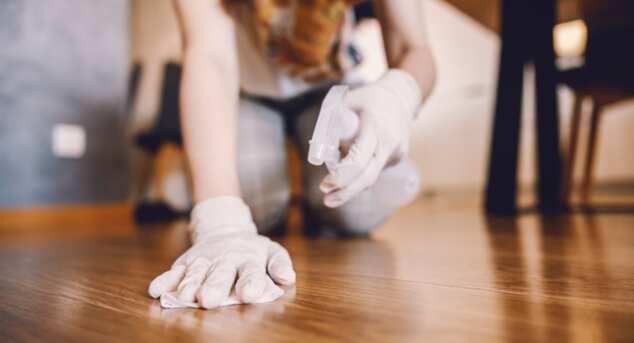Refinishing vs Recoating: What’s the Difference?
Posted by Aaron Schaalma
When it comes to enhancing the beauty and longevity of hardwood floors, homeowners and interior designers often find themselves caught between two options: refinishing and recoating. Both processes have their unique benefits, and understanding the key differences can help you make an informed decision that best suits your needs.
Understanding Refinishing
Hardwood refinishing is akin to giving your hardwood floors a complete makeover. This process involves sanding down the top layer of the wood to remove any scratches, stains, or imperfections. Once the floor is smooth, a fresh coat of stain or sealer is applied and then multiple coats of finish are applied to give it a brand-new look.
The Benefits of Floor Refinishing
A Fresh Start: By sanding down to the raw wood, refinishing allows you to completely change the color of your floor, offering a fresh start if you're looking to transform the space.
Restoration of Beauty: This process can restore even the most worn-out floors, bringing them back to their former glory.
Increased Value: Well-maintained floors increase the overall value of your home, making refinishing a wise investment.
When to Choose Refinishing
Refinishing is the best choice when your floors show significant wear and tear. If there are deep scratches, discoloration, or if the finish has worn off in high-traffic areas, refinishing can make them look new again. However, it's essential to note that refinishing is more labor-intensive and time-consuming compared to recoating.
Exploring Recoating
Recoating, on the other hand, is like giving your floors a face-lift. It involves applying a new layer of finish over the existing one without sanding down to the wood. This method is less invasive and can be done more frequently than refinishing.
The Benefits of Recoating
Cost-Effective Maintenance: Recoating is generally less expensive than refinishing since it requires less labor and materials.
Quick and Convenient: The process is faster, allowing you to enjoy your refreshed floors without the lengthy downtime associated with refinishing.
Prolongs Floor Life: Regular recoating can extend the life of your floors by providing additional protection against wear and tear.
When to Opt for Recoating
Recoating is ideal when your floors are in good condition but need a little sprucing up. If there are minor scratches or if the finish has dulled over time, recoating can restore the shine and protect the wood. It's also a great way to maintain the floor's appearance between refinishing cycles.
Key Differences: Refinishing vs Recoating
To decide which process is right for you, consider the following:
Condition of the Floor: Refinishing is suitable for floors with significant damage, while recoating is best for minor surface issues.
Budget: Recoating is more budget-friendly, whereas refinishing, though costlier, offers a more dramatic transformation.
Time and Effort: Refinishing requires more time and effort, but the results can be transformative. Recoating is quicker and less disruptive.
Frequency: Floors can be recoated multiple times over their lifespan, but refinishing is usually done less frequently due to its invasive nature.
Making the Right Choice for Your Space
As a passionate craftsman, I can attest that both refinishing and recoating have their place in maintaining the beauty of hardwood floors. The decision ultimately depends on the current state of your floors and your desired outcome.
For Interior Designers
If you're an interior designer, consider the overall aesthetic you're aiming to achieve. Refinishing allows for a complete transformation, perfect for when you want to make a bold statement in a space. Recoating, meanwhile, is ideal for refreshing a room's ambiance without a major overhaul.
For Homeowners
For homeowners seeking to enhance their living spaces, both options offer a path to elegance. Refinishing can dramatically change the look and feel of a room, while recoating maintains and highlights the existing charm.
Conclusion
In the end, both refinishing and recoating serve vital roles in maintaining and enhancing hardwood floors. Whether you're looking for a complete transformation or a subtle refresh, understanding the key differences between these two processes will help you make the best decision for your space.
Remember, the beauty and longevity of your floors depend on how well you care for them. By choosing the right process at the right time, you can ensure your hardwood floors continue to captivate and transform your living spaces for years to come.
If you’d like a professional recommendation about your hardwood floors, please contact us for a free consultation.



